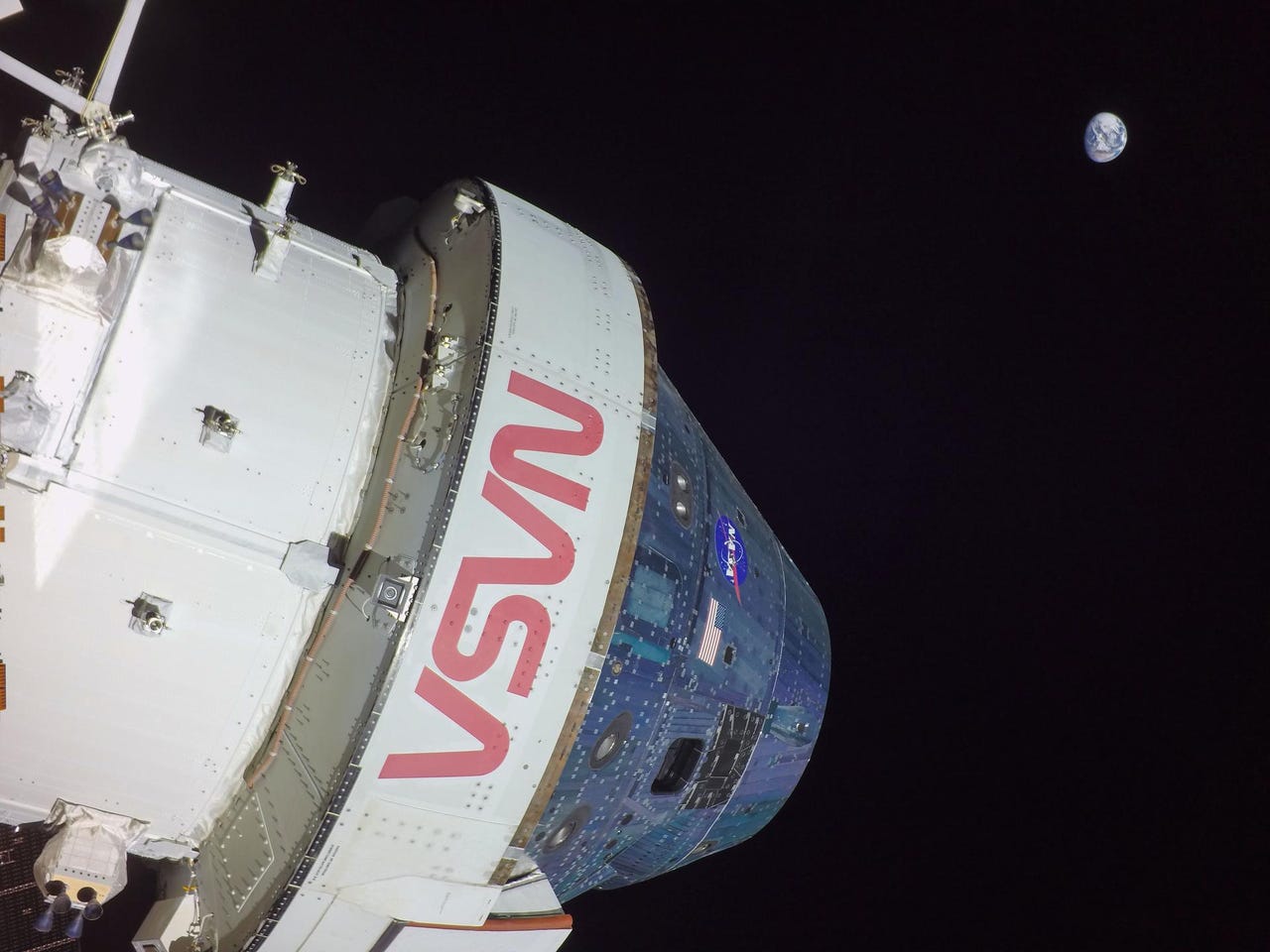Artemis I mission: Orion spaceship just passed another milestone


On flight day 11, NASA'S Orion spacecraft captured imagery looking back at the Earth from a camera mounted on one of its solar arrays.
The Orion spacecraft has now surpassed the record set in 1970 by the crew on Apollo 13's aborted mission to land on the Moon.
On Saturday, Orion was on the eleventh day of the Artemis I mission and had entered a distant retrograde orbit where it will remain for six days before its journey back to Earth, with a planned splashdown in the Pacific Ocean on Sunday, December 11.
Space
Artemis I is a practice run for the crewed Artemis II mission.
According to NASA, over the weekend Orion surpassed the distance record for a mission with a spacecraft designed to carry humans to deep space and back to Earth. The record was set during the Apollo 13 mission at 248,655 miles from Earth.
"At its maximum distance from the Moon, Orion will be more than 270,000 miles from Earth Monday, Nov. 28," NASA said in an update.
Apollo 13 was meant to be NASA's third lunar landing but the mission was aborted after an explosion and loss of three fuel cells on the third day of the journey. The explosion of the service module caused swarm of debris that made it impossible to sight real stars for navigation and the spacecraft's temperature had dropped to 38 degrees Fahrenheit (3,33 ℃).
So far, Artemis I's flight has been smooth sailing after three failed attempts at launching the Space Launch System. NASA, however, did experience an unplanned loss of communications with Orion for 47 minutes last week.
Also: What is Artemis? Everything you need to know about NASA's new moon mission
NASA engineers on Saturday completed the first orbital maintenance burn by firing auxiliary thrusters on Orion's service module at 3:52 pm. The sub-second burn propelled the spacecraft at .47 feet per second. The planned orbital maintenance burns will fine-tune Orion's trajectory as it continues its orbit around the Moon, according to NASA.
The 'moonikin' onboard Artemis I is called "Campos" after Arturo Campos, a NASA engineer who played a key role in bringing Apollo 13 safely back to Earth. He was the electrical power subsystem manager for the lunar module and was responsible for the development, design, and testing of the hardware.
Campos and other mission evaluation room members whipped up a new procedure in record time to divert power from lunar module power sources to the emergency batteries of the command and service module. This provided heat to the astronauts and enabled them to safely land on Earth. His work made Apollo 13 a "successful failure".
"Commander Moonikin Campos is outfitted with sensors to provide data on what crew members may experience in flight, continuing Campos' legacy of enabling human exploration in deep space," NASA explains. The moonikin is not the only passenger on the flight. Other passengers include Snoopy, Shaun the Sheep, and a couple of Lego characters.
As of 1:16 pm on Saturday, Orion was 252,133 miles from Earth and 52,707 miles from the Moon, cruising at 2,013 miles per hour.
"NASA will lead the way in collaboration with international and commercial partners to establish the first long-term presence on the Moon. Then, we will use what we learn on and around the Moon to take the next giant leap: sending the first astronauts to Mars," the space agency said.